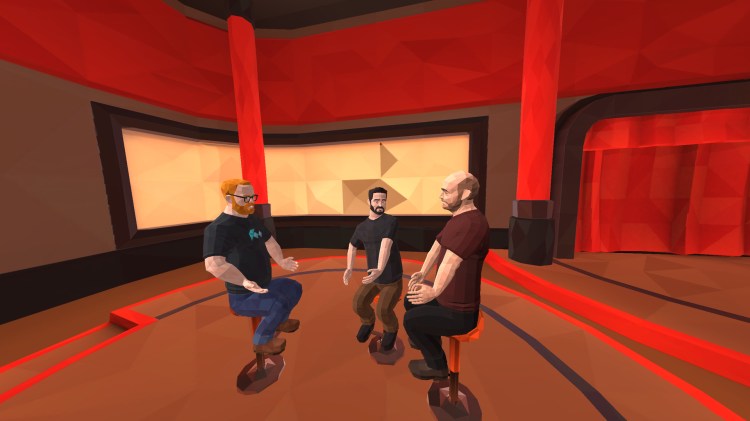Virtual reality is changing games. You can see that the second you put on the headset and boot up a shooter like Hover Junkers. But it’s also already changing virtual reality — and it could give us one of our first cyber stars.
The Foo Show is a new virtual reality series that is going to kick into full, weekly production this summer, and it has me convinced that gaming isn’t the only form of entertainment that will thrive on this new platform. The first installment of Foo (called “Episode 0”) is out now, and I used both the HTC Vive and Oculus Rift headsets to explore the program’s digital studio while host Will Smith talked with the creators of the excellent adventure game Firewatch (all taking the form of low-polygon 3D models) about their project. It was surreal getting to stand next to other people in VR (even if it was a recording), and it blew me away when Smith invited his guests and me into a simulation of one of Firewatch’s key locations. I came out of this experience wanting more as well as thinking that Foo could enable content creators, storyteller, and even marketers to engage audiences and consumers in an entirely new way.
And while Foo feels like a television show, Smith is far more focused on figuring out the tools that are inherent to VR.
“In terms of Foo, I’m less concerned with translating the language of film or TV than I am with figuring out the native language of VR storytelling,” Smith told GamesBeat. “We’re building content that is native to VR.”
Smith’s background was publishing magazines before he moved on to building video, audio, and text content for the Web. He remembers how that transition was ugly while everyone unlearned their analog skills and replaced them with the freedom of digital creation.
“I lived through the era when old media was cramming magazines and encyclopedia’s on CD-ROMs, so I’m not interested in shoehorning old formats into VR like that,” he said. “‘Native to VR’ is the key concept for us. It means that we’re using the medium for things that would be impossible in film, on TV, or Web video.”
You get that sense even in Episode 0. While you might immediately recognize Foo as a late-night talk show, it isn’t interested in making sure you feel like you’re having the same experience you would have on the set of The Tonight Show. Instead, Foo lets you explore while the host interviews the guests. You can even walk right up to their faces while they’re talking.
Foo breaks even further away from something recognizable when Smith whisked his guests (and me) away to the tower from Firewatch. Campo Santo, the game’s developer, shared its assets with Foo, and Smith’s team put it together so that you could explore it while sharing the world with the people responsible for building it.
“Things like taking the viewers along as we visit a location that only exists in a video game,” said Smith. If we’re just using VR to re-create something that exists in the real world, why bother?”
But it isn’t just about walking around a gaming environment that sets Foo apart — it’s that the show has you exploring that space while the creative talent behind it talk about its creation. In this way, Foo reminded me of the kind of storytelling you get from National Public Radio’s This American Life. Those radio reports open me up to a wide world of experiences using music, voice overs, and interviews. Foo is doing the same thing by simulated a place as well as the people inside of it.
And the “performances” of the 3D avatars is a key piece of Foo’s magic. I was technically inside of the Firewatch tower by myself, but that’s not how I remember it. Instead, I was goofing around with Will from Foo as well as Jake Rodkin and Sean Vanaman from Campo Santo while they shared interesting anecdotes and funny stories. It was recorded, simulated social experience, and I’m ready for more.
Thankfully, Foo plans to start delivering on its weekly schedule in the near future. Foo uses the Vive motion controllers and headset to record the location, gestures, and voice of the guests, and that means the staff can quickly turn around an interview for a mass audience without a lot of post-production work. Of course, this can also lead to a lot of wonkiness where people’s 3D representations look strange or behave in creepy ways — but it’s that kind of weirdness that makes Foo exciting, and Smith is leaning into that.
“The biggest upside to capturing performances in 3D-rendered environments using off-the-shelf hardware is that we can break the fourth wall in completely new ways,” he said. “People have gotten a taste of that interactivity with The Foo Show, where you can hold the same objects as the people on the show or when the avatars make eye contact with you, but that’s just the beginning of what we have coming.”
VentureBeat's mission is to be a digital town square for technical decision-makers to gain knowledge about transformative enterprise technology and transact. Learn More

